The “Who, What, Where, How and Why” Behind Key Messages
“Key message” is a commonly used phrase in marketing, almost to the point of where we take it for granted. Yet when applied properly, key messages are crucial for connecting with audiences and driving the results we want as marketers.
Let’s take a step back and examine some critical factors of key messages:
- What makes a strong key message?
- Who are your key messages targeting?
- How do you develop an effective key message?
- Where do you use key messages most effectively?
- Why are key messages successful in producing desired outcomes?
The secret sauce of a strong key message.
A strong key message must align with your organization’s goals. However, the most important ingredient that too many marketers forget much too often is that an effective key message must be stated in a way that focuses on a benefit for the target audience. Ultimately, the key message isn’t about your organization, services or programs – it’s about what your organization, services and programs can do for your audiences. For example, a major organizational goal may be to increase hospice length of stay. How do you translate that goal into benefits that are meaningful to key audiences? Transcend has long espoused that marketers need many more “you” messages than “we” messages. In addition, a strong key message should include a fact that differentiates you from your competitors.
Different targets require tweaks of key messages.
With a goal of increasing hospice length of stay, think of the different advantages earlier hospice engagement means for different audiences – patients and families, referrers and payers, for instance. Looking at the goal through the lens of each target audience separately will help you tailor key messages for what interests them most, respectively. One size definitely does not fit all.

Developing effective messages.
Put yourself in each target audience’s shoes. Try to think like they do and look at your offerings from their individual perspectives. As an exercise, let’s look at how increasing hospice length of stay can translate to different audiences:
- Patients and families. The sooner you engage with our hospice support, the more expert care we’ll be able to provide. You or your loved one can experience greater comfort and a higher quality of life to make the most of your remaining time together. In fact, our hospice team has the highest family satisfaction scores among all providers in the region.
- Healthcare referrers. Referring your patients to our hospice care sooner means they and their families can have more expert support at home for a longer period. Our care not only increases their comfort and quality of life, it helps keep your patients out of the ER and hospital. Our team has more clinicians board-certified in hospice and palliative medicine than any other provider in the region.
- Payers. Encouraging your members and network referrers to engage with our hospice support sooner provides the highest quality care at the lowest total cost – mainly by keeping patients out of the ER and hospital, and at home where they prefer to be. Ask to see our data that shows how our care prevents ER visits and hospitalizations better than any other hospice and palliative care provider in the region.
Where to feature key messages.
Key messages belong in every communication piece you share with your audiences. In fact, since a strong key message centers on a benefit to your audiences, it can really help focus your messaging to keep it concise and consistent. The benefit of a key message can be particularly effective at the lead of a communication piece, or at the close as part of a powerful call-to-action.
The methods for reaching each key audience most effectively will vary. But whether the key message is part of paid media or social media to reach families, or part of a pitch deck and leave-behind materials for referrers or payers, don’t shy away from repeating key messages in different forms of communication to your audiences. A cornerstone of great marketing and branding is consistency and repetition. What may feel redundant to your team who sees all your marketing materials is necessary to drive home key messages to your audiences. Studies show that audiences typically have to hear or see a message a minimum of nine times before it really starts to sink in. So keep hammering away at your key messages tailored for each audience.

Harvesting desired outcomes.
When you step back and look at the factors of effective key messages, it’s easy to see why they work well – they directly support your organizational goals while appealing to the exact wants and needs of your target audiences.
Transcend Strategy Group has been successfully applying this methodology to promote providers of palliative care, home care and hospice for more than two decades. Producing desired outcomes requires time and a little patience for the messaging to take root. But when our clients stick to the strategic marketing plan supported by appropriate media dollars, each of them has seen patient days increase dramatically. ROI from the marketing investment is typically exponential, with revenue often generated at rates of 20 to 1 or even higher.
Need help with your key messages?
Transcend stands ready to help you analyze your unique market opportunities and translate your differentiators into key messages that drive growth-oriented results. To get started, email us anytime at [email protected].










